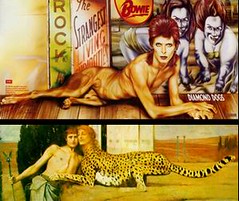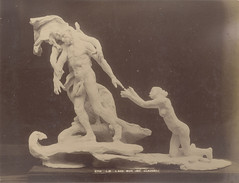A juxtaposition of Guy Peellaert for David Bowie‘s “Diamond Dogs” album cover, 1974 and Fernand Khnopff, “The Caress” via gatochy
“The age of maturity” (1894) by Camille Claudel
The man is Rodin, the imploring woman Camille Claudel and the woman who is leading Rodin away is his wife Rose Beuret. This sculpture was made after the break-up of Rodin and Claudel, after which she went “mad” and was locked up by her family and influential brother for life.
- PopEye with work by Guy Peellaert from May 7 until June 15 in Hasselt
- Camille Claudel in Paris at the Musée Rodin retrospective from April 15 to July 20.




























































